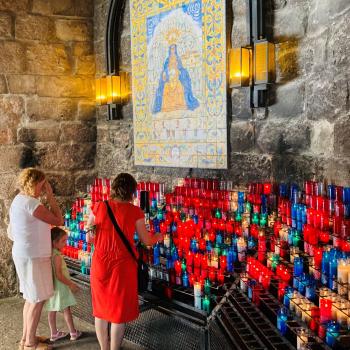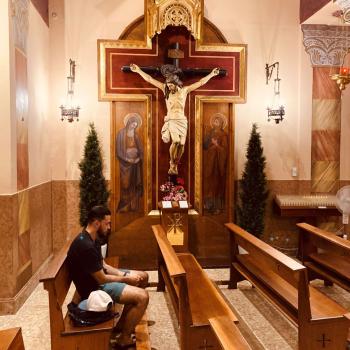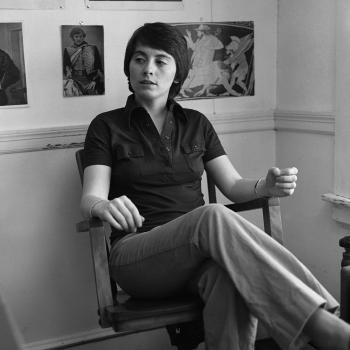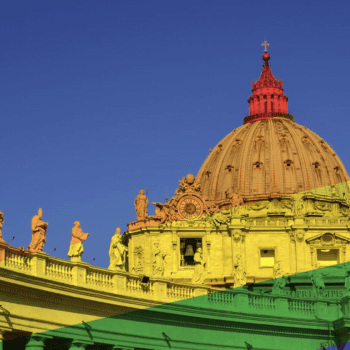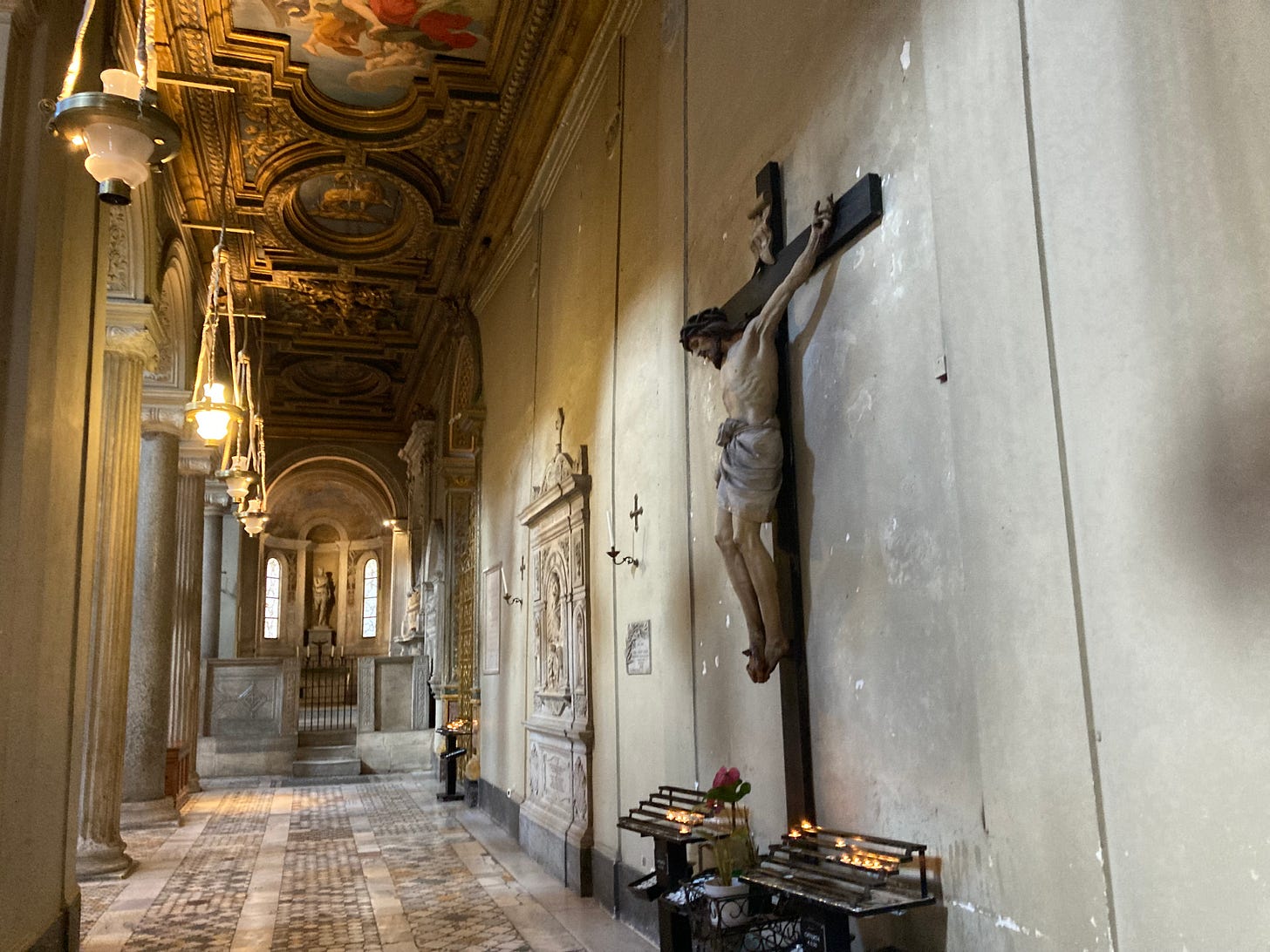
The latest at Trad parishes
*I’m noticing that although some attend the TLM because they find the liturgy to be spiritually transformative, for most it appears to be mainly a form of reactionary performance art or tribal signaling. Most seem to be reacting to something they don’t like which they think the Novus Ordo Mass represents: something they don’t like about the Pope, the Synodal Path, the “masonic infiltration” at Vatican II, etc.
*At the parishes I’ve attended (which is probably not representative of all parishes that celebrate the TLM), the homilies are taken straight out of the Scholastic manual tradition and rely almost solely on Thomistic theology. The less strictly theological homilies are highly moralistic tirades against the evils of the secular world or of Vatican II. I rarely hear any mention of theological concepts from Vatican II or after…and especially hear very little about how to experience/witness to Christ’s presence.
*The parish bulletins are chock full of quotes from obscure medieval writers about modest dress, the proper way to kneel in front of the exposed sacrament, and proof that receiving communion on the tongue is the only true way to receive (even Padre Pio said it!). There are also messages from the pastor urging women to remove their crying babies from the sanctuary, reminding the people not to sing along with the choir, and–once again–reminding people (women) why they should dress modestly.
*Speaking of clothing, most of the people dress like it’s the 1950s…which really adds to the whole trad as a LARPing/performance art kind of vibe. Ironic since it sometimes feels like just another “identity” for people to perform…not that much unlike people in “the world.”
*I saw a girl wearing a chapel veil and a frumpy, overwashed T shirt and raggedy jeans…which seems pretty blatantly counterintuitive if you ask me. Also I saw a lady wearing a pink cowgirl outfit complete with a pink hat…can’t say I understood what she was going for there…
The ideology fueling them
*At the end of the day, people go to TLM for different reasons. Some truly believe Vatican II was not a real council and that the Novus Ordo is not a valid Mass. Others, that most Novus Ordo Masses are too ugly and Protestant for their personal taste. Others want to escape back into the 1950s. Many love the decadent aesthetics and campy pageantry. Some believe it’s going to lead them to deeper sanctity. But above all, what unites many of these people is not a shared theological conviction, but a similar temperament and psychological disposition. The reality is that many people who attend TLM experience some form of neurodivergence and/or are on the Spectrum (as I’ve explored here).
*It’s not a bad thing that people with different ways of thinking and perceiving reality find a home for themselves in the TLM. I tend to think it’s a positive thing. What’s concerning is that most of the people who attend TLM because of their neurodivergent proclivities tend not to recognize that they are drawn to it because of their proclivities…there’s no sense of ironic detachment from it…they think they are there not because they have quirky tastes, but because they are righteous and correct. Thus why it’s so problematic when these communities, whose premise is an ideology of a reactionary nature, gain power.
*Ideologies are not capable of offering something generative and lifegiving. Ideologies do not give us the courage to take up our Cross and follow Christ. They do not give life to flourishing, joyful communities, whose joy is so overflowing that its members can’t help but want to share it with others…including others “in the world.” It lacks a missionary zeal and becomes stagnant.
*Most importantly, an ideology cannot enable people to recognize the relevance of Christ “in the flesh”…to recognize the presence of beauty and meaning in the mundane factors of everyday life, from one’s work, to one’s life at home and relationships with the people they meet. It creates a divide…Christ becomes an abstraction, an idea or concept to be defended, a set of principles to be followed, but not a living Presence that changes our experience of reality.
*The fear of engaging our human subjectivity—that is, our desires and our experiences—clouds many trads’ ability to engage with the modern world. To some, any forms of theology (including Communio theology–especially its personalistic and phenomenological strains) that give space to integrate our subjectivity with objective doctrines are not doctrinally sound. Following Tradition divorced from engagement with our subjectivity makes it very hard for these communities to make an attractive and life giving proposal to its members and others.
The Motu Proprio
*I’m beginning to wonder if Pope Francis was using reverse psychology when he released the motu proprio Traditionis Custodes. Ever since July 2021, I’ve been seeing more people attending the Tridentine Latin Mass, and more women at Novus Ordo Masses wearing chapel veils. If anything, the document has ignited the flames of radtrads and has sparked the curiosity of others.
*In all seriousness, I understand the Pope’s decision to set certain limits on the celebration of the TLM (which really are not that different from the limits set by John Paul II). The problem seems to be less with the liturgy itself than with the types of ideological communities it is generating. The more radicalized communities seem to dead set on ignoring the direction of the Church post-Vatican II, and have made themselves even more obstinate during the Francis papacy. These factions have the potential to create deep divisions in the Church.
*This is why I wonder why Francis chose this method to address the issue at hand. Didn’t he realize that this was going to fan the flames of their obstinacy? What happened to the spirit of dialogue and encounter…to synodality? He seems to be keen on using this method to reconcile with and draw back heterodox groups who have veered too far to the left…so why not use this merciful, fatherly approach with the heterodox of the right? The backlash is just a confirmation that Francis was right all along: the path forward is one of accompaniment and encounter, and not of brute force.
*The way many of the trads I know talk about the Pope reveal how much their position has become one of an ideology and not one of faith or theological conviction. The Pope for many (including for the “libs”) has become a politician who we expect to conform to our opinions…to pander to his electorate.
*I have many opinions about the Pope. But I am very certain that my opinions are not very important. The Pope was chosen by the Holy Spirit to be my father, whose role is to generate me spiritually and foster the deepening of my unity with Christ, and my capacity to recognize how He is calling me to follow Him in my daily life. When reading or listening to something from Pope Francis, my priority is to allow myself to be challenged spiritually, to be called to conversion by his words, and not to analyze the theological or sociopolitical coherence and what he’s saying. I’m not calling for us to categorically agree with every single thing he says. But a lack of simple obedience is symptomatic of a lack of faith.
*In an ideal world, Church leaders (not necessarily the Pope) would work to help pastors to better understand the liturgical reforms of Vatican 2. There’s nothing more beautiful than a priest who says Mass, and lay ministers who participate, in a reverent way, imbued with an awareness of their own desire for communion with Christ. At the end of the day, the solution to our problems is going to come from sanctity and personal conversion. Flocking to the TLM is a bandaid, not a solution to the perversions of Vatican 2 liturgical reforms.
Where I’m at
*When I started attending TLM nine years ago, I went for several reasons: (a) it was more similar to the Byzantine Divine Liturgy I grew up with, (b) most NO Masses around me were so dull and, for lack of a better term, “cringe” (see Dasha Nekrasova’s comments about “boomer capitalist Catholic” parishes whose liturgies are affected and pander too much to the congregation, and Shia LeBoeuf’s comments on how he feels like many NO Masses are trying to sell him on something), and (c) partly because it felt like counter-cultural performance art.
*While I still believe the TLM is beautiful and sometimes helps me to pray better, I’m honestly getting tired of the parishioners and their reactionary polemics. I’m finding myself happier at ethnic/foreign language Masses, which tend not to be imbued with the WASPy American moral/aesthetic sensibility which I see too often at most English NO Masses (especially ones in suburban parishes). Also, the sense of tradition and of being “rooted in” something greater (coming from whatever ethnic culture it may be) is more authentic than the sense of tradition at TLM, which feels overly ideological, artificial, and man-made. Also, many of these ethnic parishes have a stronger sense of community.
*Sometimes I wonder if I should just go to Mass at Eastern Rite churches…but honestly most Catholic Divine Liturgies don’t compare with Orthodox ones. Many of these Eastern Catholic parishes have assimilated to a bourgeois American suburban sensibility …which has even pervaded many Orthodox parishes. A Divine Liturgy at a Greek Orthodox church in the suburbs is miles different from one in an urban area, where many of the parishioners are immigrants. I’m already seeing many Greek Orthodox churches start to model their liturgy and parish life on evangelical and mainline Protestant styles.
*Am I just being a liturgical tourist…following the tides of my whims and changing tastes? Possibly…but at least I have a sense of ironic detachment from my wayward proclivities.
A note from Dr. Paglia
*I’ll close with a fabulous excerpt from Camille Paglia’s 1994 interview with Fr. James Martin SJ for American Magazine:
“I began seeing a pattern in American Catholic churches: As they were being refurbished and restored, there was what I now regard as a snobbish purgation of the ethnic origins of the parishioners in these churches. In our culture, under the influence of Protestantism, there has been this homogenization, this constant bleaching out of everything ethnic in America. As that happens we get more and more removed from the life of the body. Even though the body is tortured in Catholic iconography, it’s still there, it’s present. But in Protestantism, in Presbyterian, Episcopalian styles, which is very chi-chi…it’s a very bland, country-club style.
That’s what I see as the number one problem in America. It absorbs everything. The minute you get any ethnic group into the middle class they begin to lose any ethnicity. You have this incredible domination by the WASP style. It completely cuts you off at the neck. It makes you very bland, very soft-spoken. All the bloody, barbaric reality of life in the body is gone. So I blame American Catholicism for its evolution, for allowing itself to be subsumed within the style of Protestantism. And homogenized? It’s been homogenized and turned into ‘The Donna Reed Show’!
If you go into any suburban Catholic church…the priest acts towards the parishioners as though we’re all friends…It’s part of the therapeutic culture of America, which again…the kind of debased therapy that goes on today is just making you feel better about yourself. ‘I’m O.K., You’re O.K.’…[Going to Mass felt] like a Chamber of Commerce/guild hall…totally sanitized. What”, she asks, “does that do artistically and architecturally to the church? It is incoherent. …Now we have this abomination in America of these shells of the old churches with these barbecue-pit interiors! These airline-terminal interiors. What does this do to young Catholics? I think it just removes any visual culture.”



